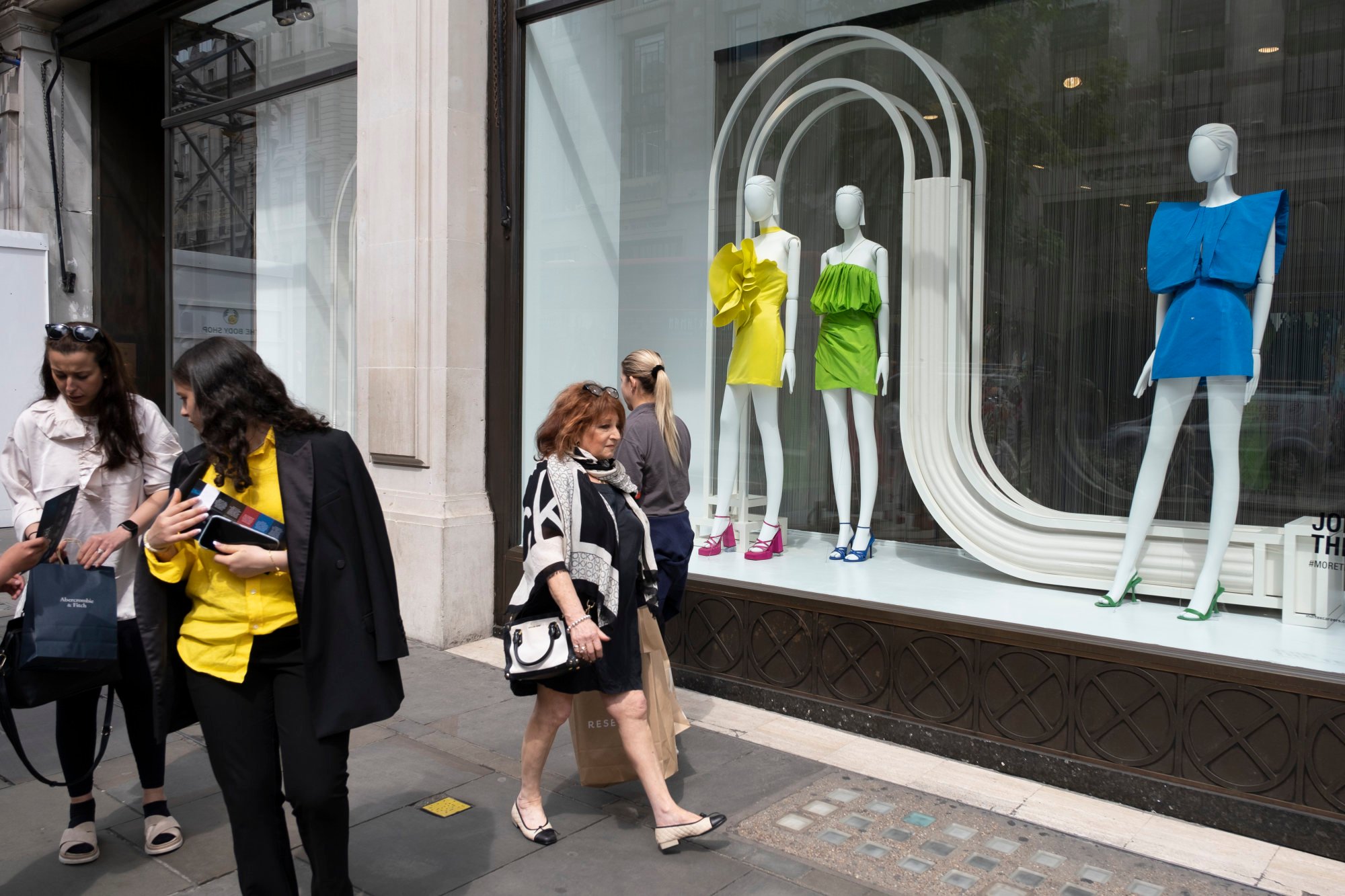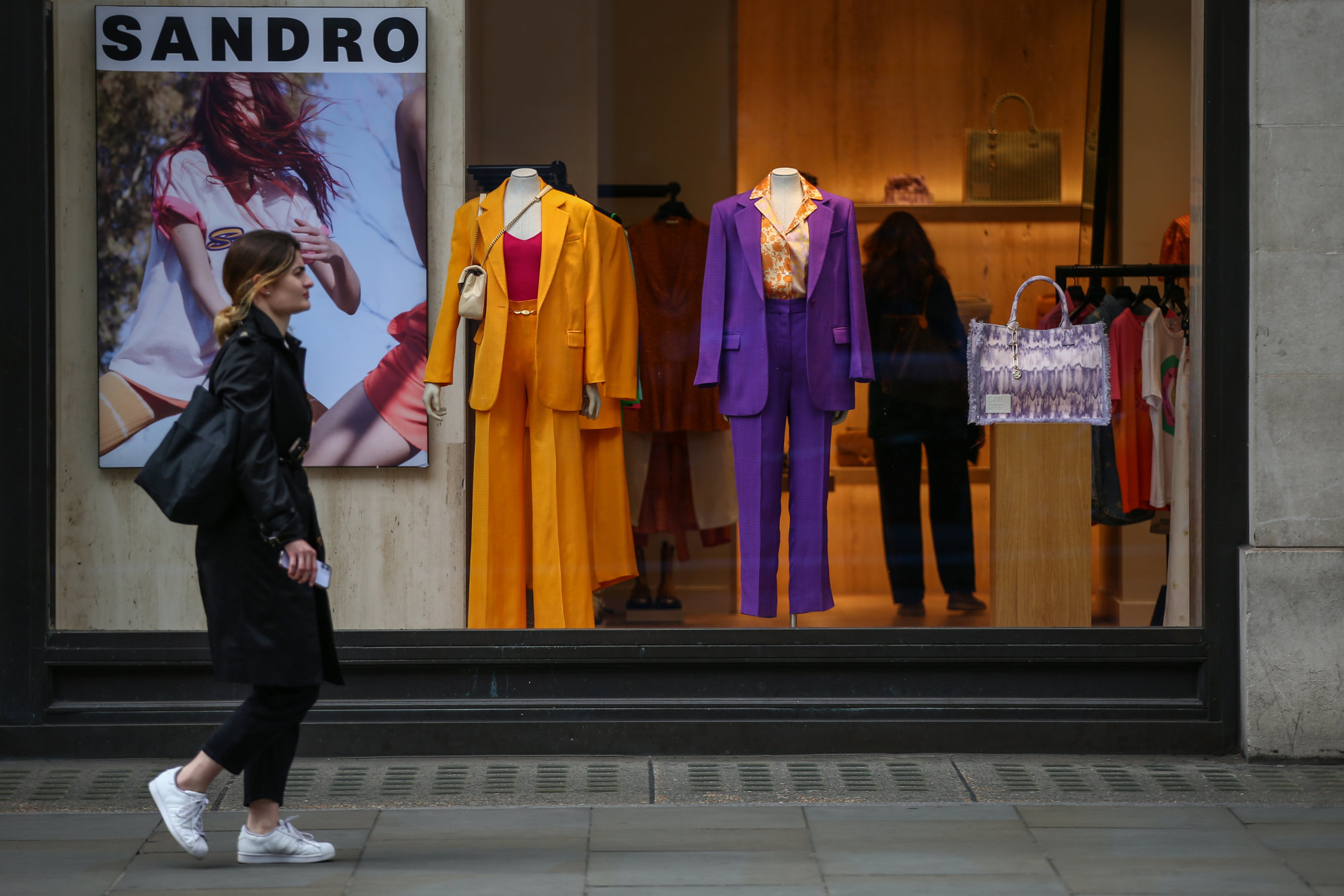
London’s Regent Street struggles to draw shoppers back after pandemic, amid rise in online retail
- Store vacancies on the famous street have doubled since 2019, and rents have fallen dramatically as online business has increased
- Business owners are working to increase foot traffic and entice shoppers, and realise they have a struggle ahead after two years of the pandemic
Regent Street, one of London’s premier shopping thoroughfares, is struggling to shake off the lingering effects of Covid-19.
Store vacancy levels, at a record 12 per cent, are almost twice what they were at the end of 2019, while rents for the best space on the street have fallen by more than 30 per cent during the pandemic, according to property company Savills.
Shoppers who stroll along the curving avenue in London’s West End, passing through Oxford Circus and Piccadilly, may notice the absence of familiar brands. J Crew, Brooks Brothers, Desigual and Zara Home all closed during the two years of on-again off-again lockdowns that battered bricks-and-mortar retailers and accelerated the shift to online shopping.
“We aren’t out of the woods by any means,” said Simon Harding-Roots, managing director for London at The Crown Estate, which counts Regent Street among its £7.7 billion (US$9.5 billion) of holdings in the capital.

“There’s work to be done to get vacancies back to pre-pandemic levels,” he said. “We’re well aware we’ve got some tough times ahead.”
The Crown Estate – a commercial portfolio of property that belongs to the reigning UK monarch, and traces its roots to the Norman conquest, in 1066 – owns a range of assets, from shops, offices and rural lands to the seabed around England. Now an independent company established by an Act of Parliament, its proceeds go to the UK treasury, which in turn sets aside a portion of the profits to fund the monarchy.
All you need to know about summer travel: Covid-19, flights and great deals
It owns most of Regent Street along with Norway’s Sovereign Wealth Fund, which has a 25 per cent stake.
The number of visitors to the West End collapsed during the pandemic as shoppers stayed away. Now people are returning, but with many still working part of the week at home, real wages falling and tourism not yet recovered, the shopping district hasn’t bounced all the way back.
“Footfall is stubbornly down,” said Harding-Roots. “We’ve got to entice people back into London.”
Many will ask ‘do I really need to invest in a store on Regent Street’?
Britain’s biggest rail strike in a generation – and the prospect of more labour unrest this summer – isn’t helpful. Nor is the exponential growth of e-commerce companies, such as China’s fast-fashion outlet Shein.
Purveyors of luxury goods have been hit as the government’s decision to abolish tax-free shopping in Britain sends the well-heeled to boutiques in cities such as Paris, Madrid and Milan. Those hubs are gaining £5 million a week from high-earning British spenders who can make cheaper purchases on the continent, said Helen Brocklebank, chief executive officer at Walpole, which represents Britain’s luxury industry.
“Has Regent Street lost its iconic status? No not at all,” Brocklebank said. “But is there a fight for wallet share post pandemic? Yes absolutely.”

It’s not just Regent Street where the shine seems to have come off. Vacancies have also been rising on neighbouring shopping street Oxford Street, and rents have also fallen. More broadly, the problems affecting London’s prime shopping district are similar to those facing high streets across Britain. Chief among them is surging inflation, a shift to internet shopping and staffing shortages.
Retail leaders need to consider where best to invest money and many will think the digital world is a safer bet, said Peter Williams, the chairman of Mister Spex SE and former chair of Boohoo Group. “Many will ask ‘do I really need to invest in a store on Regent Street, when the West End is not looking as good as it once did? Probably not’.”
That said, churn is hardly new in Britain’s dynamic retail industry. As some brands have left the area, others – like Uniqlo – have moved in. The Japanese clothing seller opened a new Regent Street store in April.
Bangkok’s chocolate revolution: home-grown beans and locally made bars
The Crown Estate is reviewing its retail properties to mix flagship stores with smaller shops and pop-ups. Its ownership of Regent Street as a whole gives it the flexibility to break up large retail spaces and vary the type of tenants, said Harding-Roots.
Gymshark, the workout-wear brand, plans to open its first permanent store there. Skincare brand Aesop, apparel maker Armani Exchange and fashion label Marc Jacobs also have new shops in the offing.
Footfall has grown to 88 per cent of pre-pandemic levels, higher than the West End’s average of 81 per cent, according to the New West End Company, which represents businesses in the area. The opening of a new underground rail route, the Elizabeth Line, with a station at Bond Street, in the autumn may bring in more visitors.

Gymshark likens Regent Street to New York’s Fifth Avenue or the Champs-Elysées, in Paris. It has a history of attracting the most exciting new brands, said Mitch Healey, who heads physical retailing and events at the company. Gymshark customers want to “hang out” and touch and feel products in real life, he said.
But for Superdry, Regent Street has lost its appeal. The fashion brand closed its store last year in favour of a newly fitted-out flagship across three floors on Oxford Street.
While the tech gadgets of Apple and colourful toys of Hamleys of London pull in customers at the upper end of Regent Street, there isn’t an anchor store at the bottom end to keep shoppers interested, Julian Dunkerton, CEO and co-founder of Superdry, said.
“You’ve got a real determined shopper on Oxford Street and you’ve got a sort of lost tourist at the bottom end of Regent Street,” he said.

